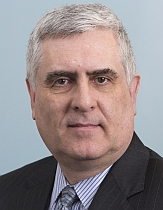
George J. Hunter
Hyperparathyroidism became unequivocally recognized and accepted as the cause of the debilitating bone disease osteitis fibrosa cystica circa 1925. It was at that time that Edward Churchill and Oliver Cope successfully removed a mediastinal parathyroid adenoma at the Massachusetts General Hospital in Boston (MGH). Subsequently, parathyroid surgery slowly developed around the world. By 1950, surgeons at the Mayo Clinic had collected a series of 140 cases, while MGH had accumulated 230 cases. At that time the conventional treatment of hyperparathyroidism was a whole neck exploration through a central collar incision, with a cure rate of around 95% in experienced hands.
Arteriographic localization of parathyroid lesions began in the mid-1950s. However, it was not until the late 1960s that selective venous sampling and selective arteriography became routine. Also at that time, noninvasive imaging studies, initially using selenomethionine, and later, subtraction thallium imaging, came into use for localization preoperatively. In the late 1970s the new modality of CT was investigated for the identification of parathyroid lesions. However, it was not routinely adopted, as the capabilities of the technology were limited and a good surgeon could locate abnormal glands better than any of the available imaging techniques. Technetium Tc99m sestamibi nuclear medicine scans replaced thallium imaging in the late 1980s as the method of choice for preoperative localization of parathyroid lesions, and venous sampling slowly became an uncommon procedure. Ultrasound equipment improved, and by the 1990s it was also routinely used for localization. Both of these techniques continue to the present time.
Despite the high success rate of whole neck exploration, the late 1990s saw the emergence of minimally invasive or targeted parathyroidectomy. This approach allowed day surgery with minimal complications. Key to the success of this approach to hyperparathyroidism was accurate identification of the offending gland prior to surgery, coupled with intraoperative parathyroid hormone assay. Accurate preoperative localization was particularly important in those cases requiring repeat surgery, for which the success rate without presurgical localization was around 80% in experienced hands.